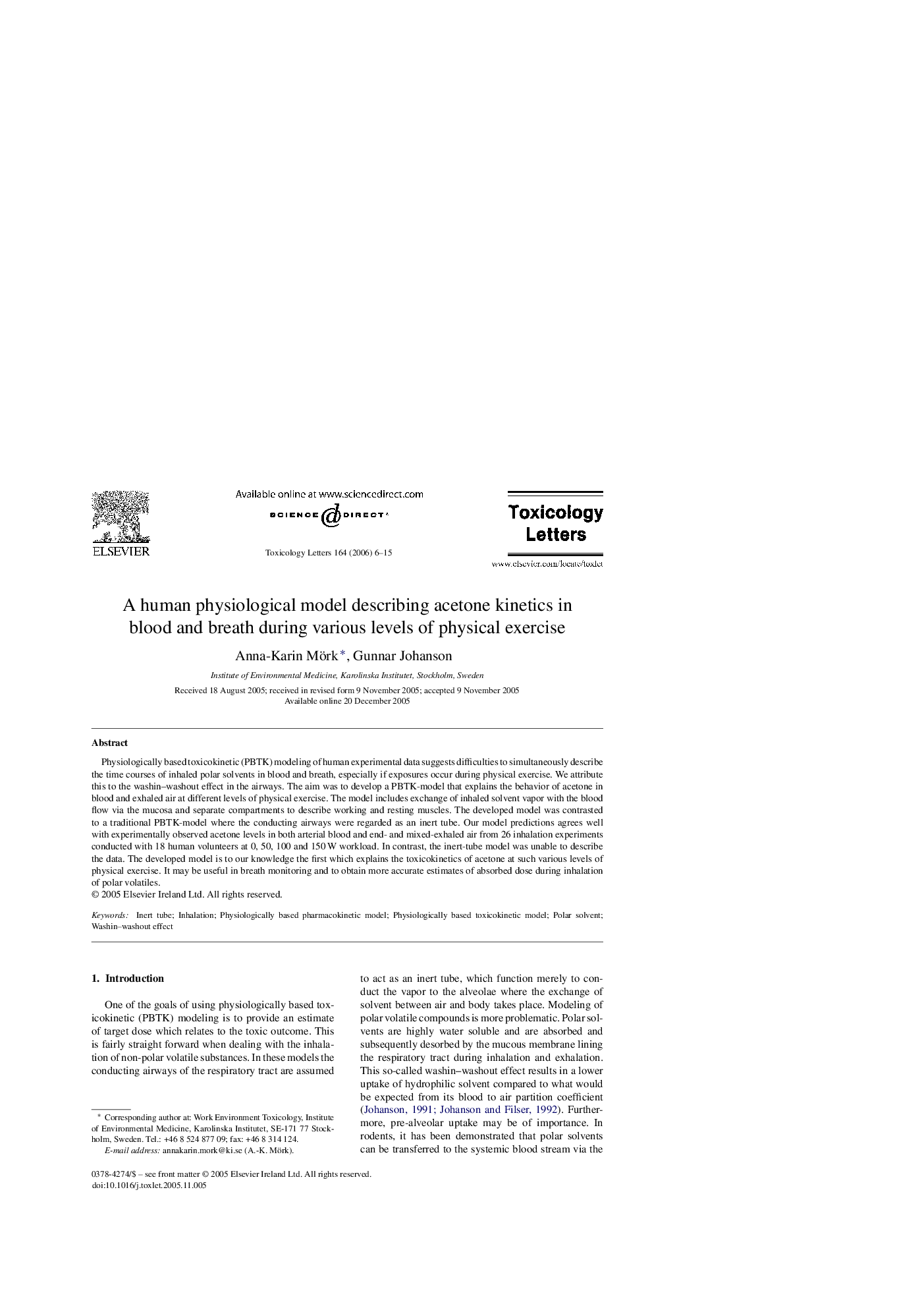| Article ID | Journal | Published Year | Pages | File Type |
|---|---|---|---|---|
| 2601811 | Toxicology Letters | 2006 | 10 Pages |
Physiologically based toxicokinetic (PBTK) modeling of human experimental data suggests difficulties to simultaneously describe the time courses of inhaled polar solvents in blood and breath, especially if exposures occur during physical exercise. We attribute this to the washin–washout effect in the airways. The aim was to develop a PBTK-model that explains the behavior of acetone in blood and exhaled air at different levels of physical exercise. The model includes exchange of inhaled solvent vapor with the blood flow via the mucosa and separate compartments to describe working and resting muscles. The developed model was contrasted to a traditional PBTK-model where the conducting airways were regarded as an inert tube. Our model predictions agrees well with experimentally observed acetone levels in both arterial blood and end- and mixed-exhaled air from 26 inhalation experiments conducted with 18 human volunteers at 0, 50, 100 and 150 W workload. In contrast, the inert-tube model was unable to describe the data. The developed model is to our knowledge the first which explains the toxicokinetics of acetone at such various levels of physical exercise. It may be useful in breath monitoring and to obtain more accurate estimates of absorbed dose during inhalation of polar volatiles.
